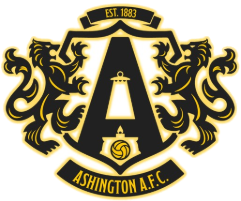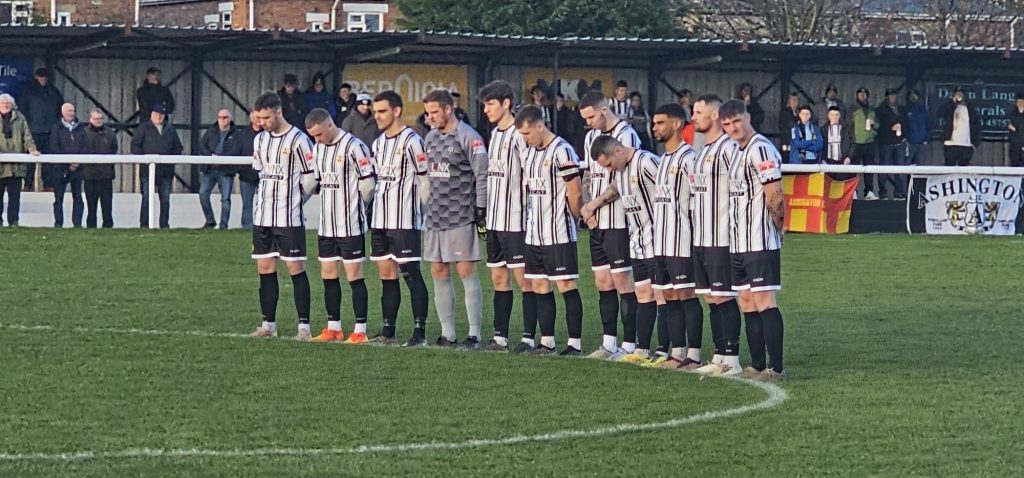By Scott Messenger
Exactly 105 years ago today saw the end of the Great War (World War 1) as the armistice was signed at Le Francport that ended the fighting between the Entente (the Allies consisting of France, the UK, Russia, the United States, Italy and Japan) and their last remaining opponent Germany.
In 1921, just three years after the end of the First War One, Ashington Football Club were elected to form the Football League Third Division North along with the likes of Tranmere Rovers, Accrington Stanley, Lincoln City, Grimsby Town, Wigan and Stockport County.
As the Colliers squad battled against some of the best teams in the country during their eight seasons in the Football League, not many would have been aware that a number of the players had actually been on the battlefields of France and Belgium just a few years earlier.
One of the most interesting stories was that of goalkeeper Thomas Newton. Born in Ryton, Thomas had just signed for Swindon Town when the war broke out. He served as a private in the Football Battalion of the Middlesex Regiment. He was the Regiments first casualty on active service when he suffered an injury while disembarking the SS Bellerophon at Le Havre in the early hours of 17th November 1915. About a year later on 13th November 1916 he was wounded in action and taken prisoner by the Germans. After the war he joined Portsmouth before joining the Colliers in August 1924. He made is debut at home to Chesterfield as Ashington won 2-1 in front of 5,000. He earned his first clean sheet just 2 days later as Ashington beat Doncaster Rovers 2-0, but unfortunately the Colliers run of good form didn’t last long and he was dropped after a 7-1 defeat at Bradford Park Avenue, replaced by Ralph Ridley. He played 16 games in total, leaving Ashington to join Crawcrook Albion.
Another goalkeeper, William ‘Bill’ Bradley, joined the Colliers in September 1927, and made his debut in a thrilling 5-4 home defeat against Lincoln City. Born in Dunston, William joined Portsmouth before signing for Newcastle United just before the war. When the war broke out, he joined the Tank Corps and the Royal Garrison Artillery, serving as a gunner. He eventually made his Newcastle debut on November 1st 1919 in a 1-0 win against Preston North End. He even played in the 1924 FA Cup final as Newcastle United beat Aston Villa in front of almost 92,000 at Wembley Stadium. After joining Ashington, Bill made 36 League and 1 FA Cup appearances over two seasons before moving to North Shields.
Another Ashington player to have served in the Royal Garrison Artillery was Francis ‘Frank’ Chipperfield. After spells at Leeds, Lincoln City, Middlesbrough and Carlisle United, Frank joined the Colliers in 1923, making his debut in a 4-0 defeat at Wrexham. He would go on to make 173 appearances in the League and FA Cup for Ashington over 6 seasons, scoring 9 goals.
Left back Stephen Buxton, who played in Ashington’s first football league game, a 1-0 win at Portland Park against Grimsby Town with 9,000 in attendance, served in the Royal Army Medical Corps during the Great War. Before the war he had played for Brentford and Oldham Athletic.
Right back/left half Thomas ‘Tommy’ Henderson joined Ashington from Workington after spells at Newcastle United and Southampton. He served as a private in the Durham Light Infantry during the Great War, where he was wounded in action in France. He made 45 League and FA Cup appearances for the Colliers, scoring 3 goals.
Ashington born outside right Matthew Hopper had two spells at Portland Park. Hopper served aboard a minesweeper in World War One. After a brief spell at Ashington after the war and before the Colliers joined the Football League, Hopper joined Lincoln City before moving on to Millwall. He later made the move to Coventry City before returning to Ashington in 1927, making his debut in a 2-2 draw at home to Bradford City, claiming an assist for the second goal. Making a total of 21 League and FA Cup appearances for the Colliers, he scored his only goal for the club against Southport in a 3-1 defeat at Portland Park.
Ex-Manchester United half back Frank Knowles made his Ashington debut in a 6-1 defeat away at Grimsby Town in 1921. The First World War broke out just as he was beginning to establish himself at Old Trafford. During the War he served in the Royal Garrison Artillery and whilst training at Aldershot played for Arsenal in the London Combination. After the war he had brief spells at Hartlepool United and Manchester City before making the move to Portland Park. He would later go on to play for Stockport County, Newport County and Queens Park Rangers.
Wing half Willy Pigg joined the Army in 1915 at just 17 years of age and was twice wounded during active service. Making his Ashington debut in a 2-1 away win at Crewe Alexandra in October 1921, Pigg made 104 appearances in League and FA Cup for the Colliers, scoring once. He left Ashington in 1924, joining Queens Park Rangers, where he spent two seasons before making the move to Carlisle United.
Albert Tubb was a right half who joined the Colliers from Northern League South Bank, making his debut in a 3-0 home win against Walsall in March 1923. During the Great War he served as a sergeant in the Northumberland Fusiliers. While he was at South Bank he reached the FA Amateur Cup final, getting a runners-up medal as they went down to a 5-2 defeat to Bishop Auckland after extra time at Middlesbrough’s Ayresome Park. He left Ashington in June 1925, making the move to Barrow.
These players were some of the fortunate ones that survived the Great War. We thank them for not only representing our great club, but for putting their lives at risk to defend and protect Britain and its allies many years ago. We must remember them and the many others that made the greatest sacrifice back then and in the many conflicts all over the world since.

